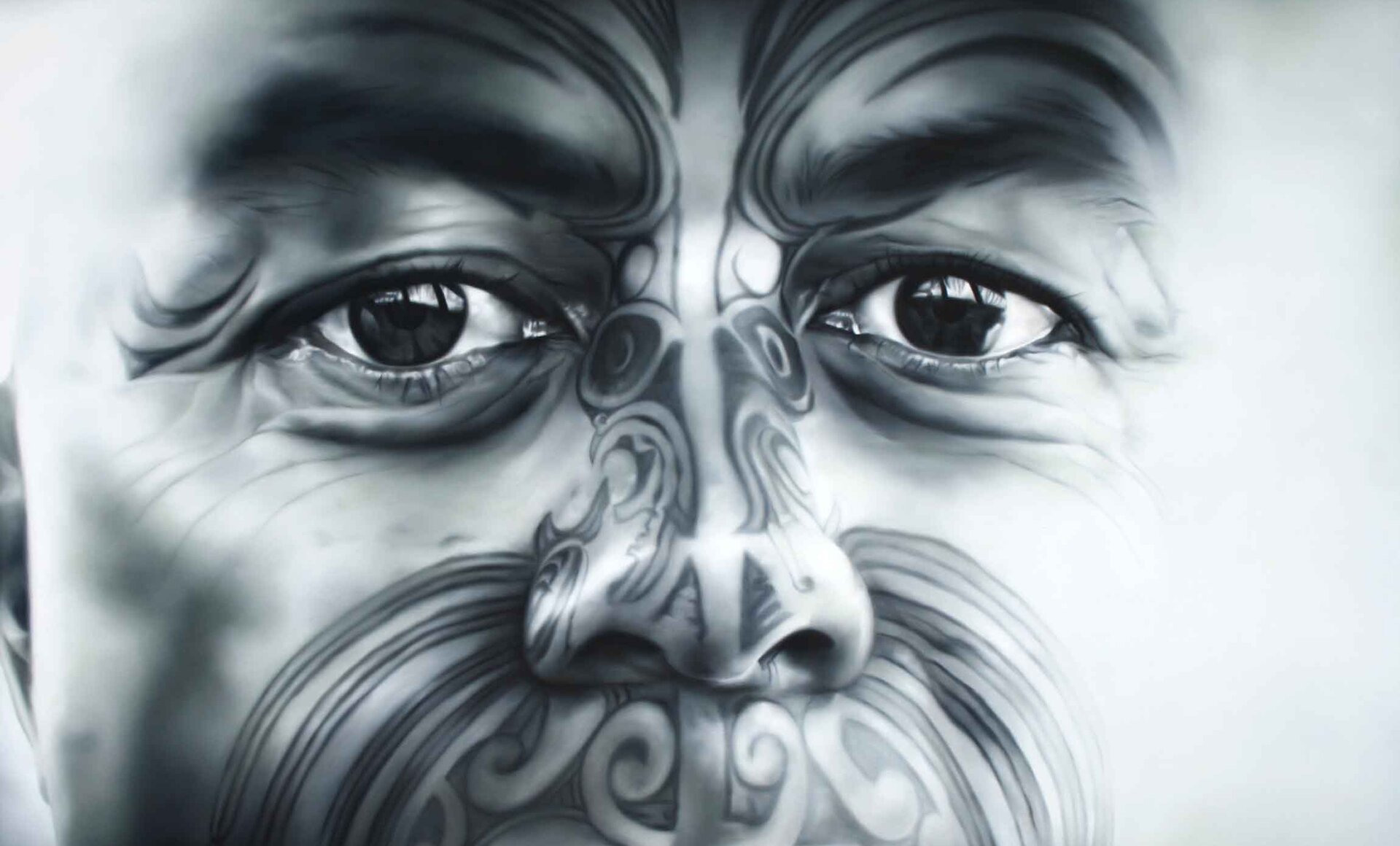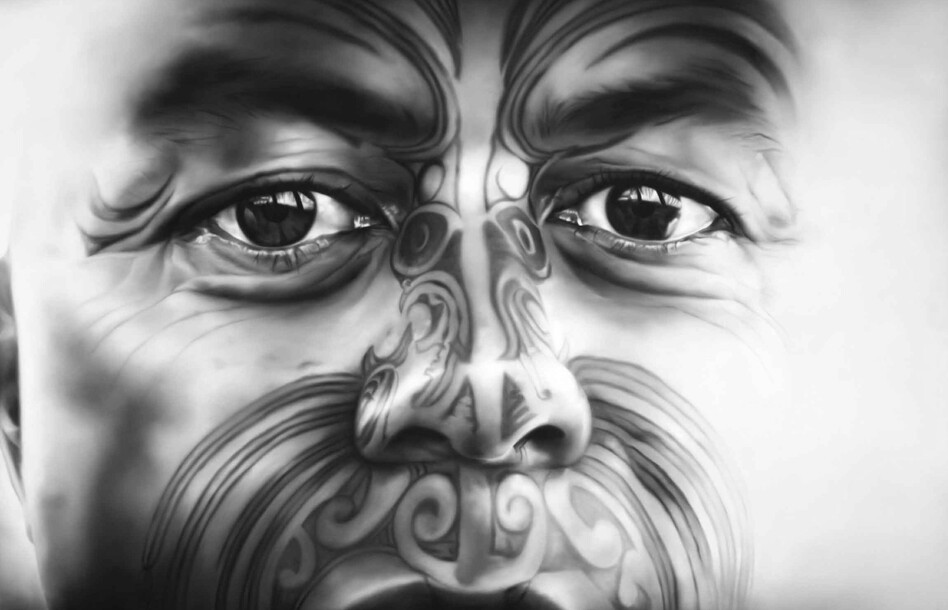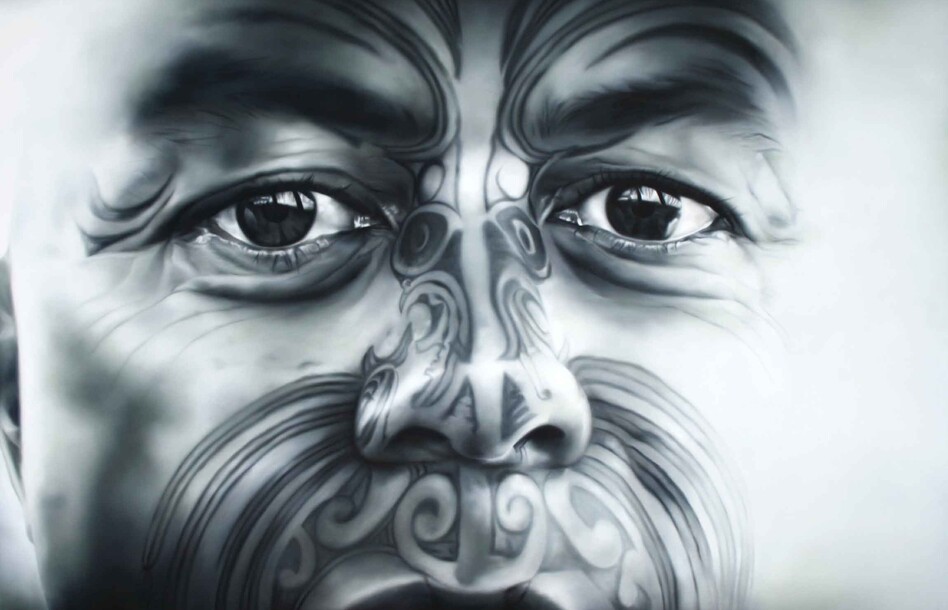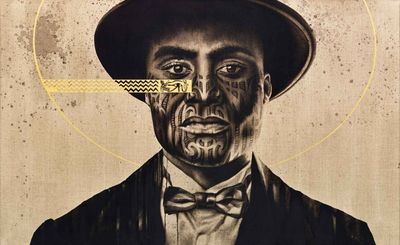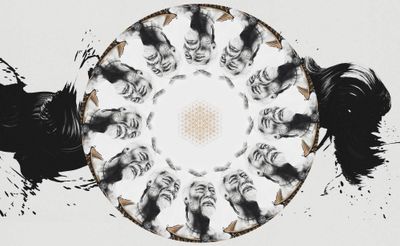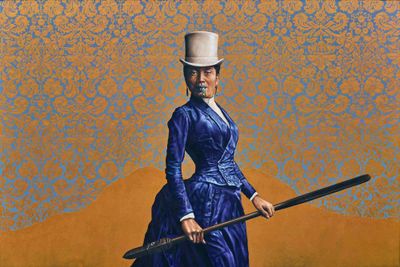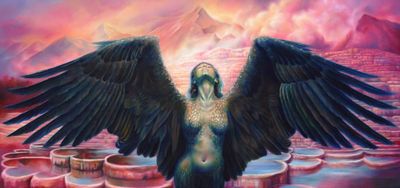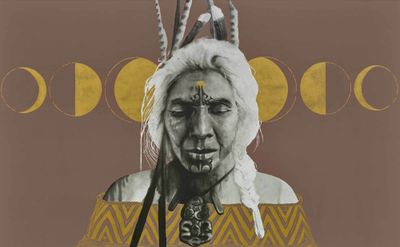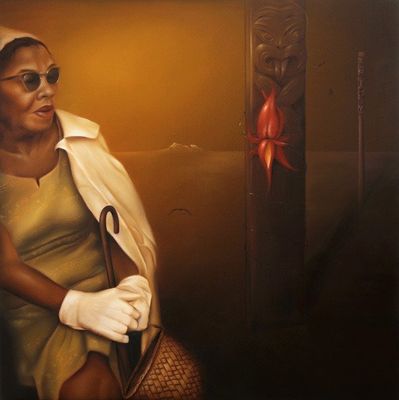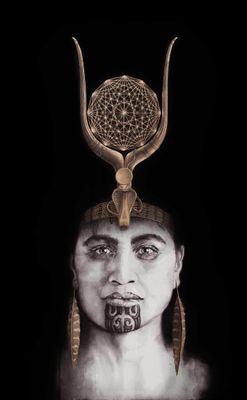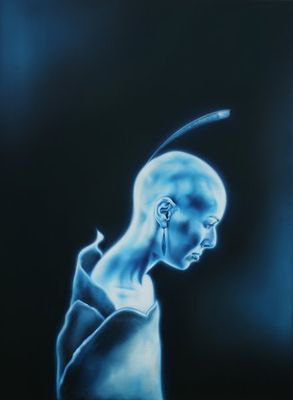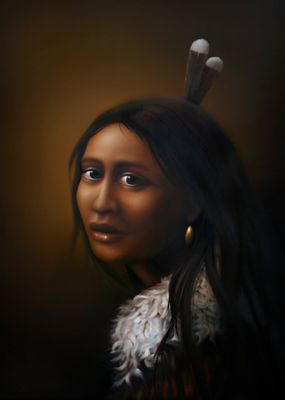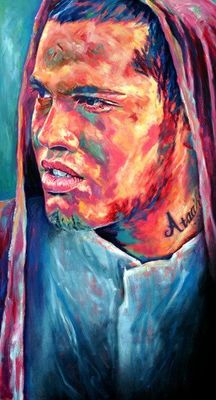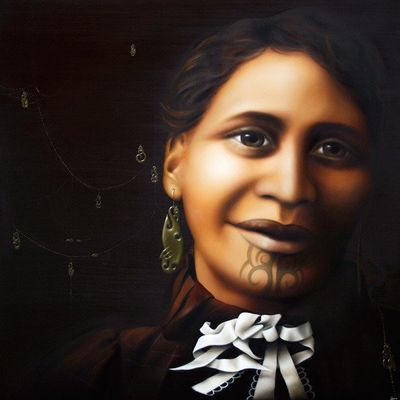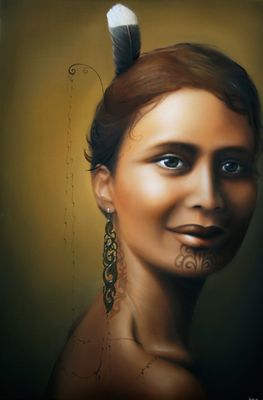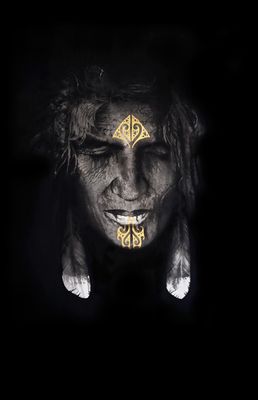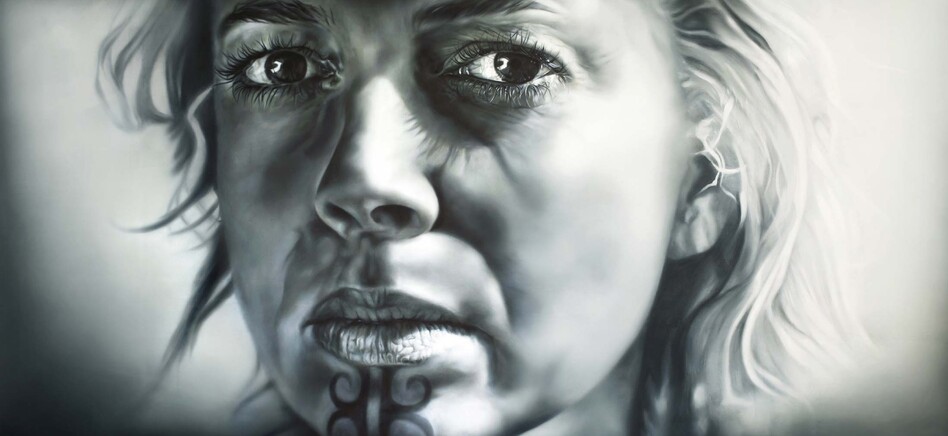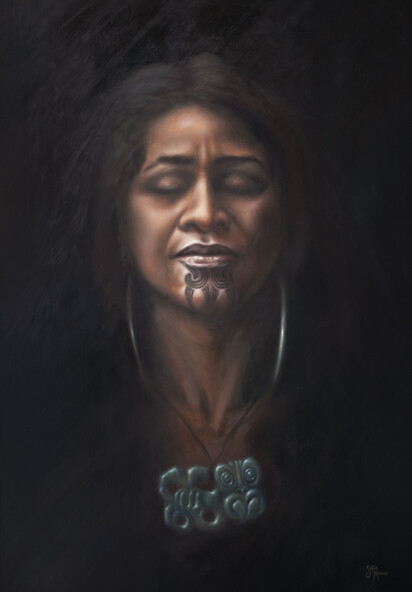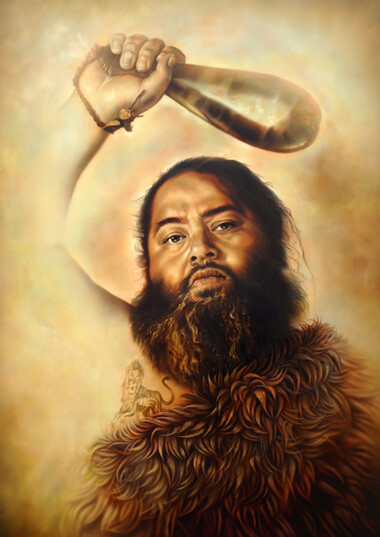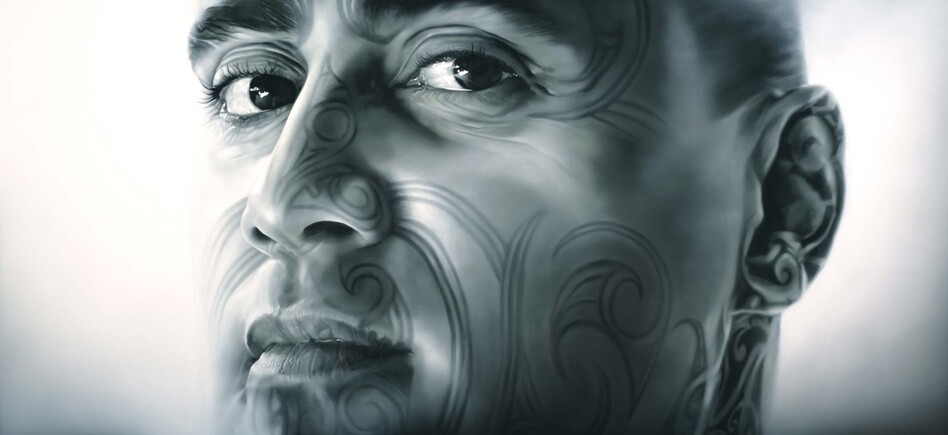Contemporary Maori Portrait Paintings
"I'm interested in painting creative and inspiring Māori people who are helping to evolve today's culture through their own art forms or roles in society." - Sofia Minson
Sofia Minson's contemporary Māori oil portraits are an ongoing series of works that explore the modern meaning of heritage for an indigenous culture living in a post-colonial society.
The artist, of Ngāti Porou Māori, Swedish, English and Irish decent, uses the traditional Western medium of acrylic and oil on canvas favoured by Gottfried Lindauer and C.F. Goldie – 19th and early 20th century Western colonial artists who some say took it upon themselves to record in precise detail, the 'vanishing race' of Māori. This was a belief commonly held at the turn of the century.
Minson intends to use their medium to show Māori as being a very much living, evolving and creative people, inhabiting real and current time and space.
Minson's large-scale, close-up oil works have a powerful impact. Faces tower over you in size and hold your attention with detailed, highly realistic eyes.
Often the portraits are painted with a grey or sepia palette, which alludes to 19th century black and white photographs of Māori who were posed and adorned with status-defining feather cloaks, huia feathers, Ta Moko, pounamu and other taonga.
Minson aims to redirect the ‘gaze’ of indigenous portraiture in two ways:
- Rather than European colonial painters and audiences gazing upon Māori subjects, Minson, as a Ngāti Porou artist, is depicting fellow contemporary Māori people. The gaze is now between Māori.
- Many believe Goldie and Lindauer did Māori a great service by recording their tupuna (ancestors) in such beautiful detail. Others find Goldie's subjects in particular to be embued with a sense of melancholy mainly looking downward, as if contemplating their disappearing culture. Minson's mondern-day subjects look out of the canvas directly at the viewer with intense eyes full of presence and mana. Māori now have their power back and gaze outward at the world.
“We’re No Vanishing Race, Goldie"
Sofia Minson's contemporary take on 19th century New Zealand masterpieces
Charles Goldie’s sought-after oil portraits of Māori have twice broken the $500,000 mark at auction. Recession or not, buyers will still invest in top-quality New Zealand historic works “especially of Māori” says Sofia Minson “because like it or not, Maori culture is what sets us apart from the rest of the world."
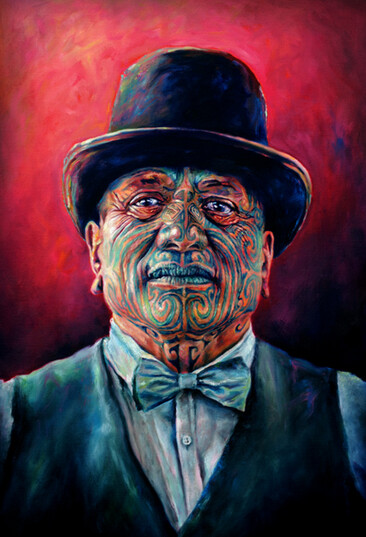
"Tame Iti" by Sofia Minson. 755 x 505mm. Oil on canvas. Original Sold.
While curating New Zealand Portrait Gallery’s “Makers of Modern New Zealand” exhibition, economist Brian Easton discovered “there is no tradition of Māori portraiture since Lindauer and Goldie and that's something I hadn't realized. It's terrible, there is not even a good portrait of Sir Apirana Ngata.”
Parnell Gallery director Sally Souness believes Minson is filling an important niche by creating Māori oil portraiture for her generation, using the traditional Western medium to show contemporary Māori as a vibrant and evolving people. Minson’s portrait and landscape oil paintings are inspired by her mixed Māori and European heritage.
Far from Goldie’s recordings of a “vanishing race” is Minson’s towering three metre high portrait of Travis Rapana (pictured above), the artist's good friend and descendant of Ngapuhi chief Hone Heke.
Painted in sepia tones reminiscent of 19th century photographs of Māori, he wears a traditional kiwi feather korowai (cloak), holds a mere (pounamu war club) above his head and could be mistaken for a historical rangatira (chief) if it weren’t for a lion tattooed on his chest - certainly no ancient moko. The lion is the lion of Judah, the symbol of the Israelite tribe of Judah beginning with the patriarch Jacob in the Book of Genesis, the tribe into which Jesus was born.
Listen to Radio NZ interview with Makers of Modern NZ exhibition curator Brian Easton on Maori portraiture and Minson's painting of Dame Joan Metge.
Tiki Taane Portraits
Watch musician Tiki Taane responding to Minson's two paintings of him with full-face Moko:
In 2011 Minson created two, two-metre-wide oil portraits of New Zealand musician Tiki Taane, with painted face moko. They are powerful close-up images, which bring clearly to view the connection he forges between himself and his whakapapa. The works took 12 months to paint from the time Minson photographed Taane in her Auckland art studio, marking the beginning of her painting process.
Minson's artwork first caught the eye of the chart-topping musician in 2007 when they were both featured in Mana Magazine at the same time. Taane contacted the painter with an idea to collaborate through album artwork or merchandise for his music. Minson thinks of this portrait as a collaboration because "the paintings are so full of Tiki's story and his presence, which comes through his Ta Moko and the intensity of his eyes."
Minson's mixed Maori (Ngati Porou), Swedish, English and Irish ancestry has sparked her interest in how we relate to the culture of our ancestors in a contemporary world.
Taane has worn his moko previously as artwork: inspired by C.F. Goldie portraits, he presents himself with full facial moko on the cover of his Past, Present, Future album.
After his arrested in April 2011 for singing "f*** the police" at a Tauranga nightclub, Minson says "Tiki must have found the media and legal spotlight challenging. As a fellow artist I admire his strength coming out with a new song "Freedom To Sing" and a new album "In the World of Light" as he has proven his creativity and inspiration is more powerful than ever. In these paintings Tiki proudly wears his moko, an outward sign of his inner growth and resilience."
Interview with Tiki Taane on Ta Moko
How was the decision made to have you wearing Ta Moko for your album Past, Present, Future?
Seeing as the album was delving into my story of understanding my whakapapa, I wanted the artwork & especially the cover to be similar to a Goldie portrait.
Who designed your moko?
Inia Taylor from Mokoink, who has tattooed a lot of me & also my mum, drew the moko based upon my whakapapa, new & old. We made the prosthetic moko for the video Tangaroa in which I play the roll of my Tipuna.
Would you ever get a permanent full-face moko?
Yes, the moko that we designed will be the one I will eventually wear, but that will be in many years. Like DNA, it is mine & mine only. My son & his sons will be the only people who could wear that moko.
What does moko mean to you?
One of the biggest reminders for me to keep on pushing, are my Moko & Tattoos. Everyday I have to carry these signs with pride, through the judgement, to never forget who I am & where I have come from, for that sets the foundation of where I am heading.
Stay in the loop
Find out first when Sofia's new original paintings are released.
And receive invites to important exhibitions.
